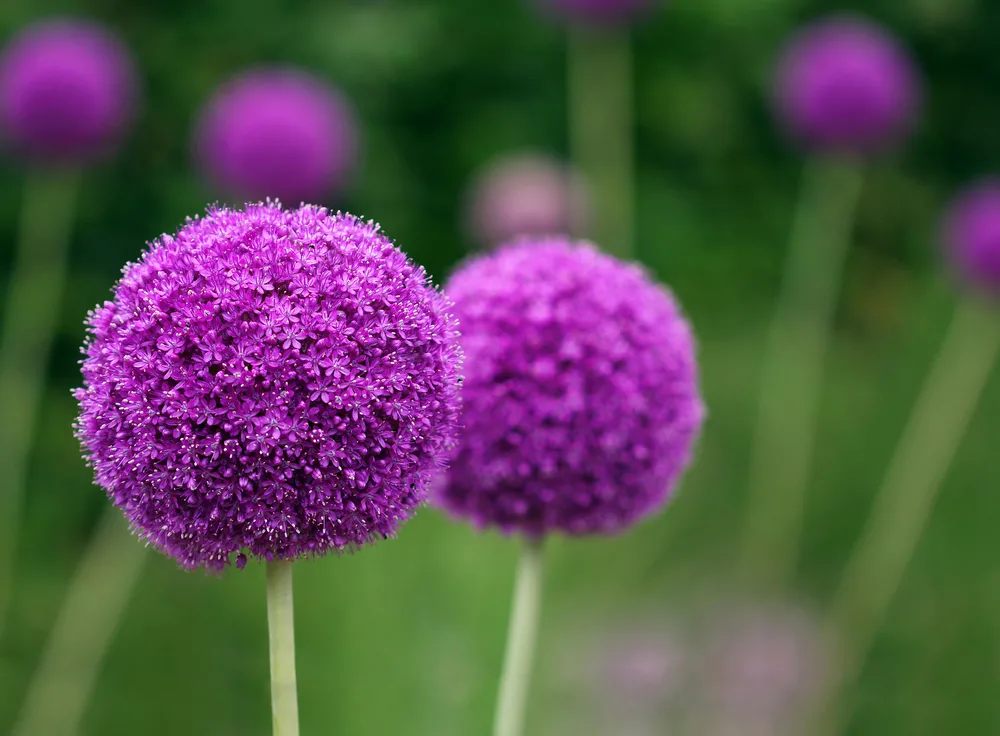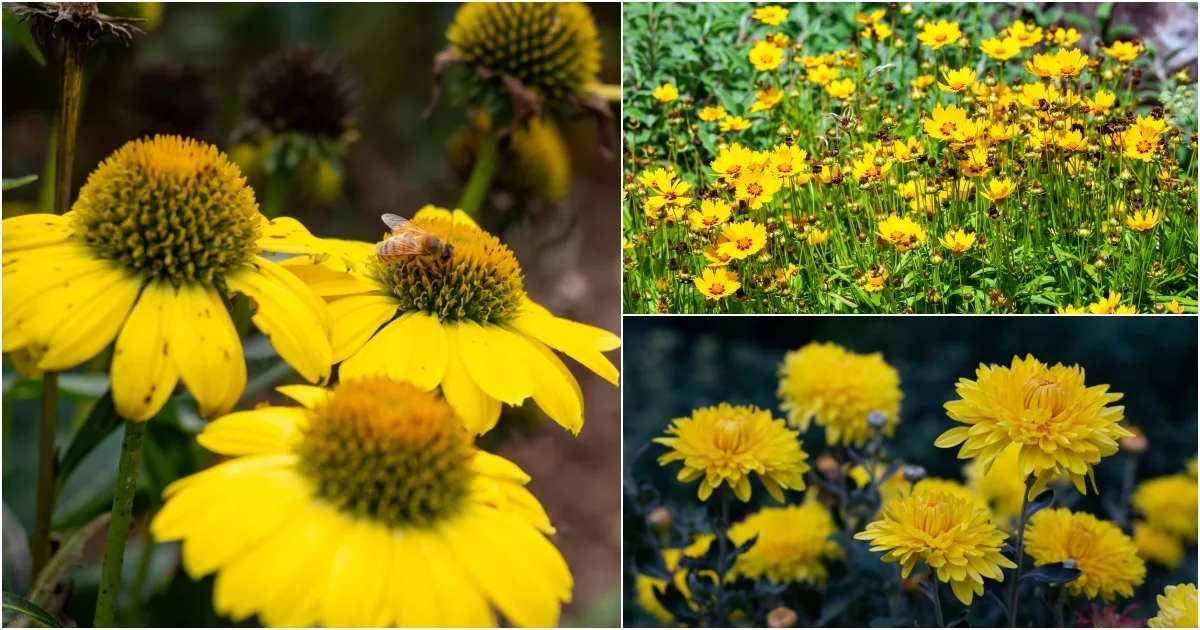
There is nothing better than walking into your garden and seeing bright yellow blooms displayed across the landscape. Yellow flowers are akin to looking at sunlight in a garden as they can brighten up any day.
When planning your garden and what you would like to plant, it’s always best to consider which kind of plant you will use. Perennials are a popular option because they will come back year after year with ever improving blooms.
So, it would only make sense to add the best with the brightest and plant some yellow perennials in your garden. The only question left is which yellow perennial flowers you should grow in your backyard?
1. Back-Eyed Susan (Rudbeckia)
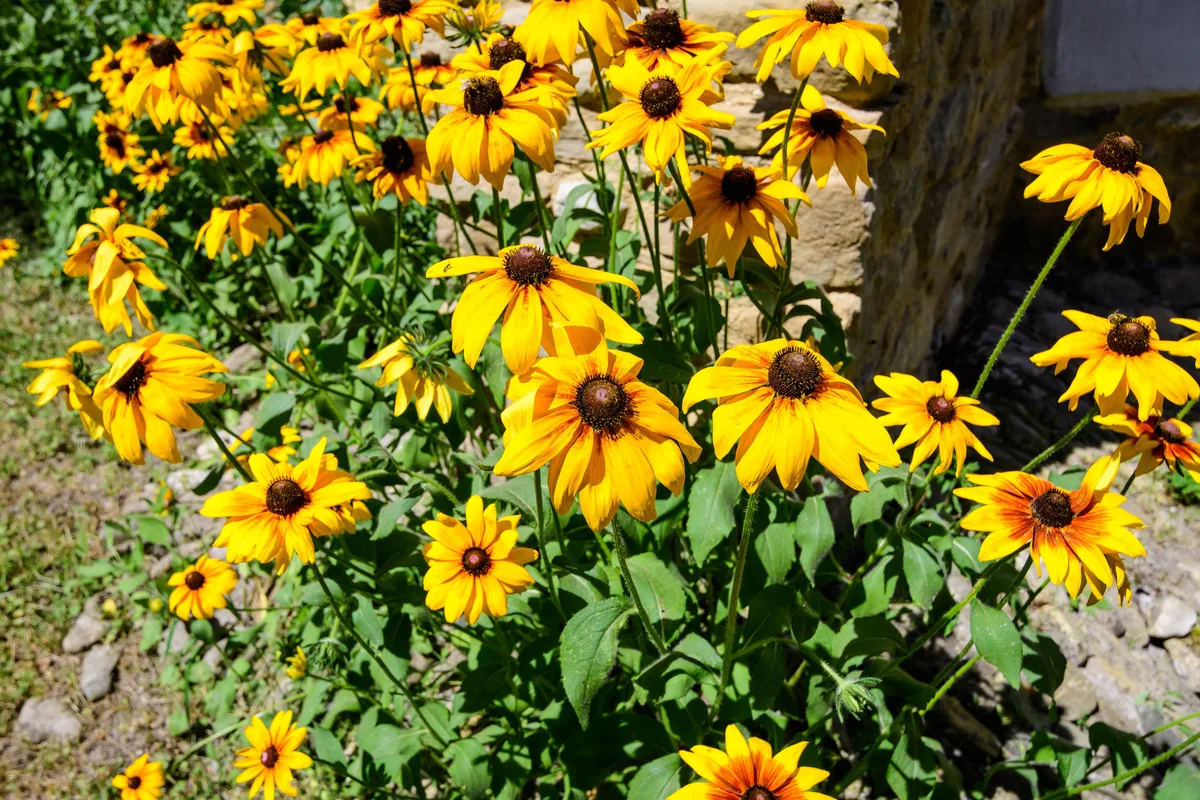
This sun-loving perennial wildflower is native to North America. Its exquisite black and yellow flowers will brighten up any garden. Hardy to zones 3 – 11, Black-Eyed Susan’s grow up to 24 inches tall, preferring well-drained, moist soil.
If you want to help your plant produce new flowers, it is suggested that you remove the faded flower heads every few days. This perennial will grow best in landscaped beds, garden borders, and they also do well in container gardens.
2. Tickseed (Coreopsis spp.)
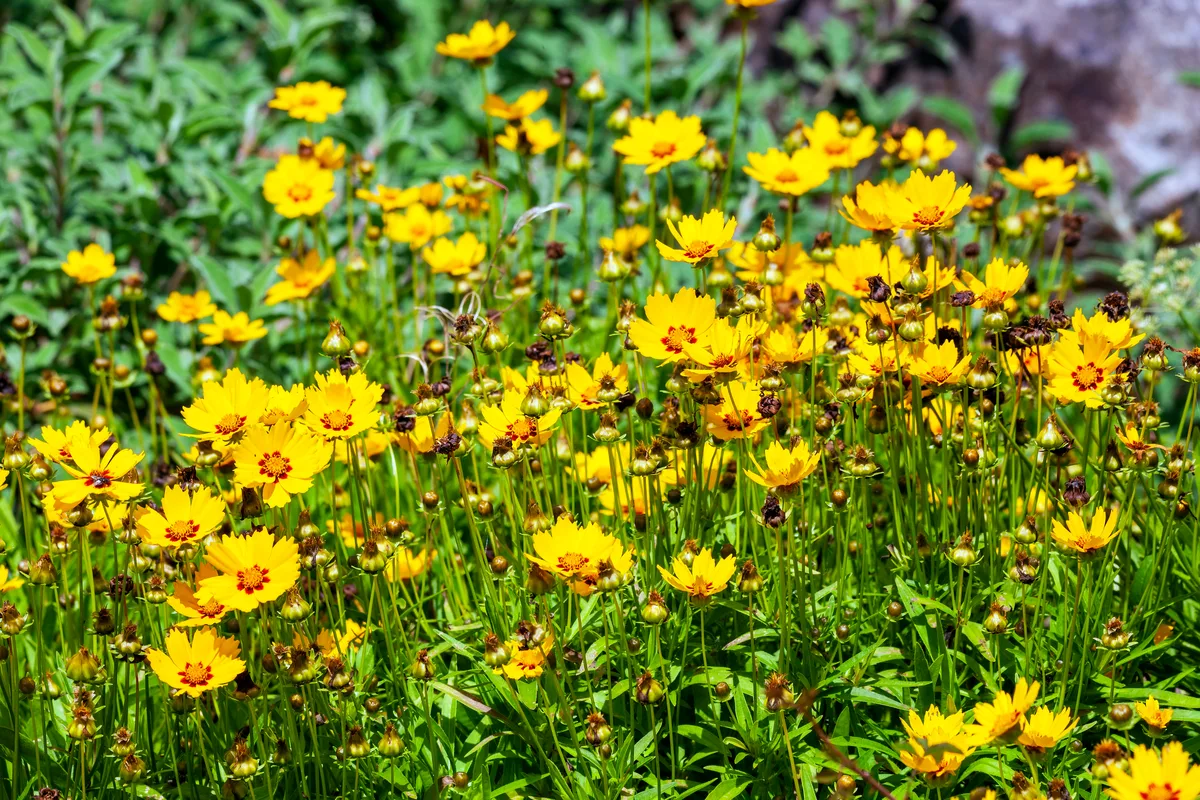
Coreopsis is another sun-loving North American Native. Hardy to zones 4 – 9, this perennial grows 18 – 24 inches tall; if you prefer a smaller version, there are dwarf options available that only grow 6 – 12 inches tall. This plant prefers full sun, needing at least 6 – 8 hours a day.
Coreopsis prefers well-drained rich soil; water this plant whenever the soil feels dry to the touch. The best time for planting coreopsis is in the spring once the threat of frost is over. You will get your first flowers the second year after you have planted them. Clip away the faded flowers to promote longer bloom times.
3. Climbing Rose (Rosa Graham Thomas)
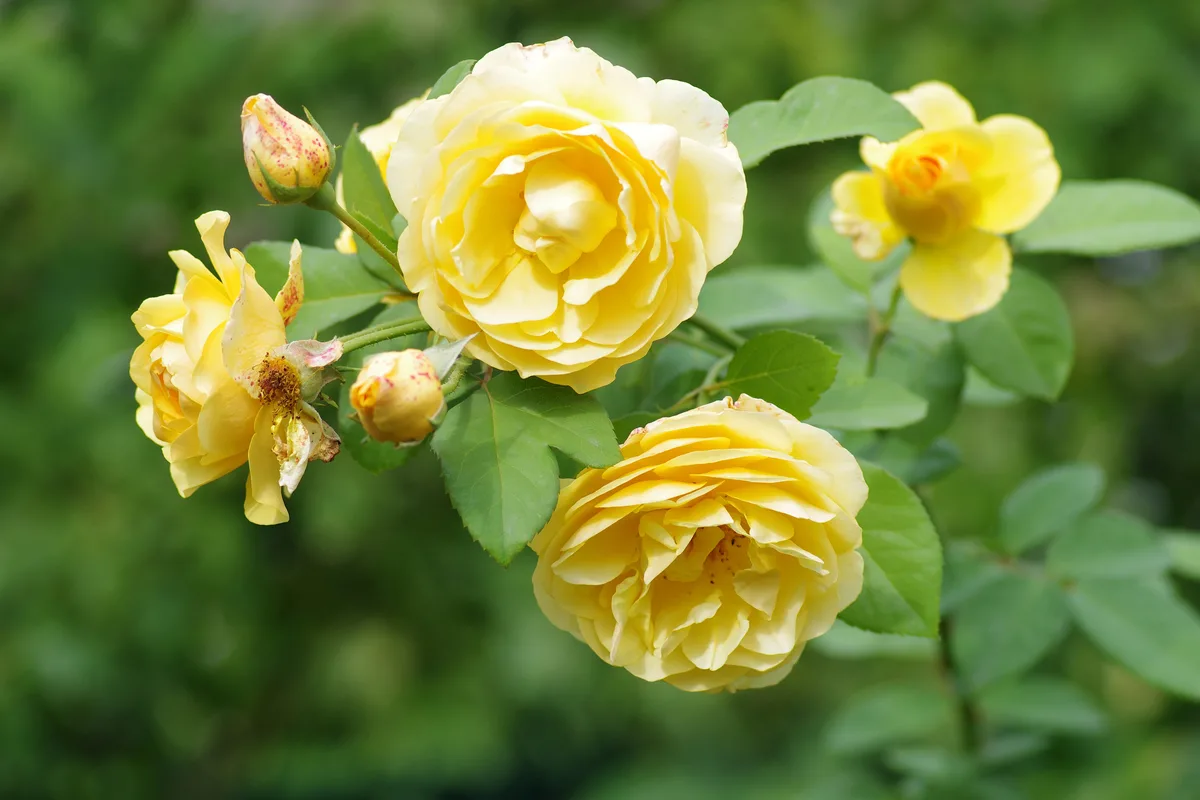
Not many flowers are as beautiful as a rose, and the Graham Thomas rose is a gorgeous yellow bloomer. Growing in hardiness zones 5 – 9, this plant will thrive in full sun or partial shade.
The Graham Thomas prefers moist, fertile soil that is well-drained and grows 36 – 72 inches in height. Plant this rose in your hedges for best results, as companions in mixed borders, or as specimens.
Due to its long stems, up to 60 inches, it can be trained as a climber. You can lightly prune this rose by reducing side shoots by a half or one-third.
4. Dutch Hyacinth (Hyacinth orientalis)
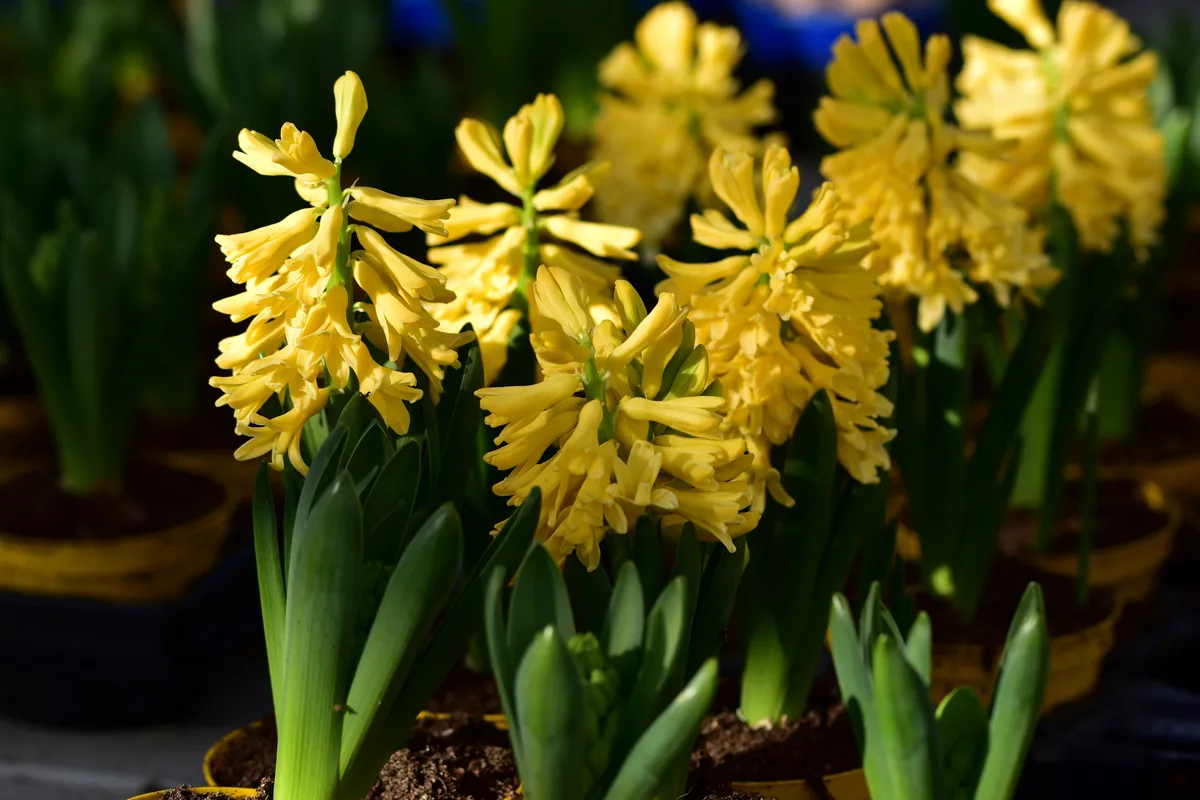
The yellow Dutch Hyacinth is one of the rarer color forms but one of the most beautiful. The flowers look like little bells which almost float on top of their bright green, lance-shaped leaves. They give off a lovely fragrance, so planting them near a doorway or along a footpath would be appreciated by your sense of smell.
This form of hyacinth thrives in hardiness zones 4 – 8, although they will require protection in the winter months of anything lower than zones 5. Adding straw mulch to the soil will help to prevent frost damage.
Dutch hyacinth grows up to 6 – 10 inches tall, preferring well-drained, medium moisture soils. They will survive in full sun or partial shade. Plant these beauties in groups of at least five in your borders, beds, rock gardens, or containers.
5. Yellow Coneflower (Echinacea paradoxa)
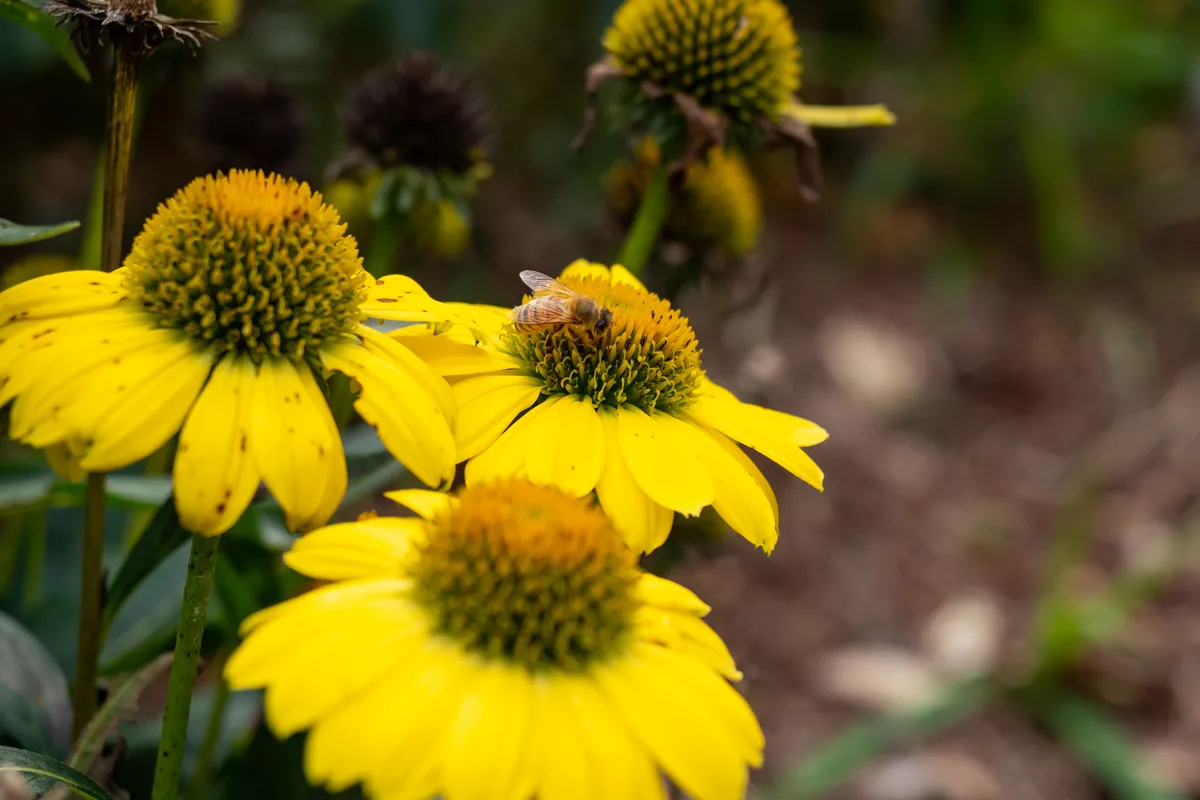
The coneflower is an extremely tough perennial, and many consider it one of the best flowering plants for a sunny spot. The yellow flowering type is a hybrid of the purple coneflower. Thriving in hardiness zones 3 – 9 and growing 24 – 36 inches tall, this perennial prefers full sun and well-drained alkaline soil.
Remove the blooms when they start to fade, and this will encourage more blooms. Keep your plants tidy and try to control them from self-seeding. Although their seeds are a favorite snack for birds, especially the American Goldfinch, so leaving a few behind will attract birdlife into your garden.
6. Persian Buttercup (Ranunculus asiaticus)
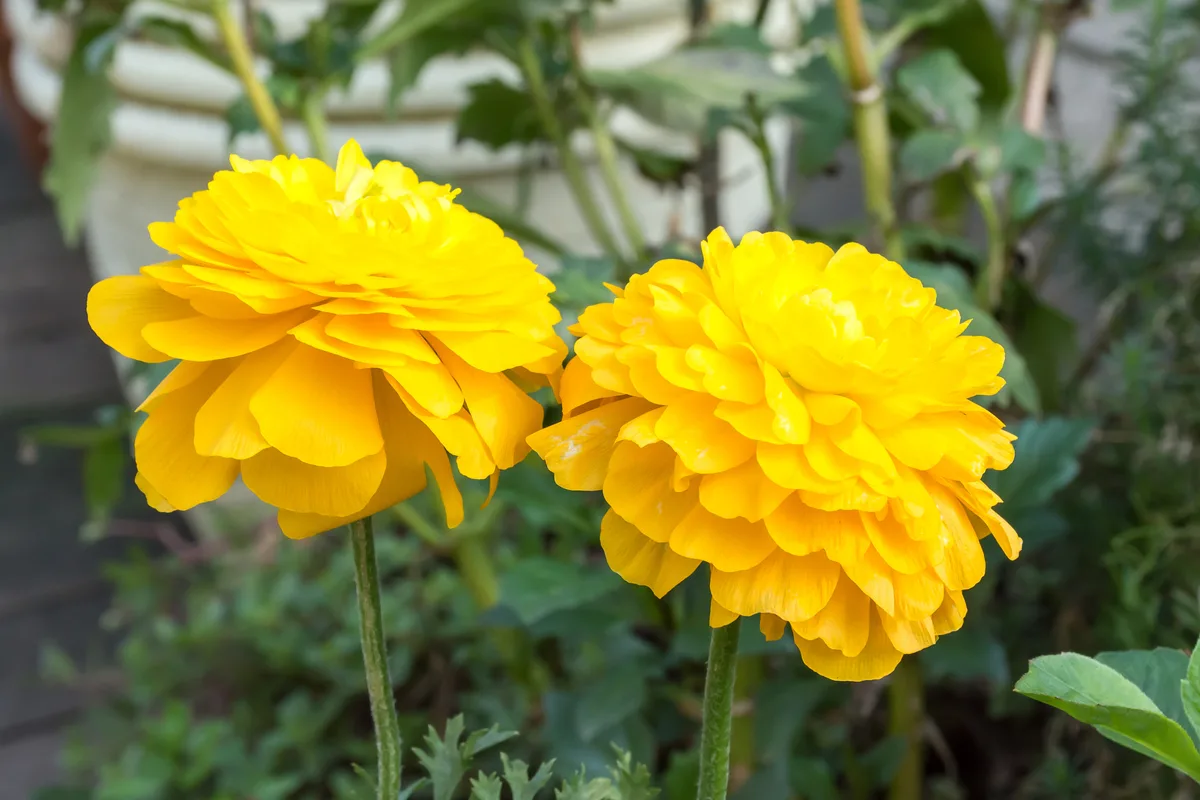
This prolific perennial is a super long bloomer, lasting up to six weeks and producing large brilliantly yellow rose-like flowers.
Ranunculus is a tuberous rooted plant that has lush foliage and blooms in early to mid-summer. This perennial thrives in milder to colder climates in hardiness zones 8 – 11.
These perennials grow up to 12 inches in height and prefer well-drained medium moisture soil and full sun. This perennial is perfect for borders, garden beds, and containers. The number of flowers you get will depend on the size of the bulb/corm. The bigger the corm, the more flowers they will produce.
7. Yarrow (Achillea millefolium)
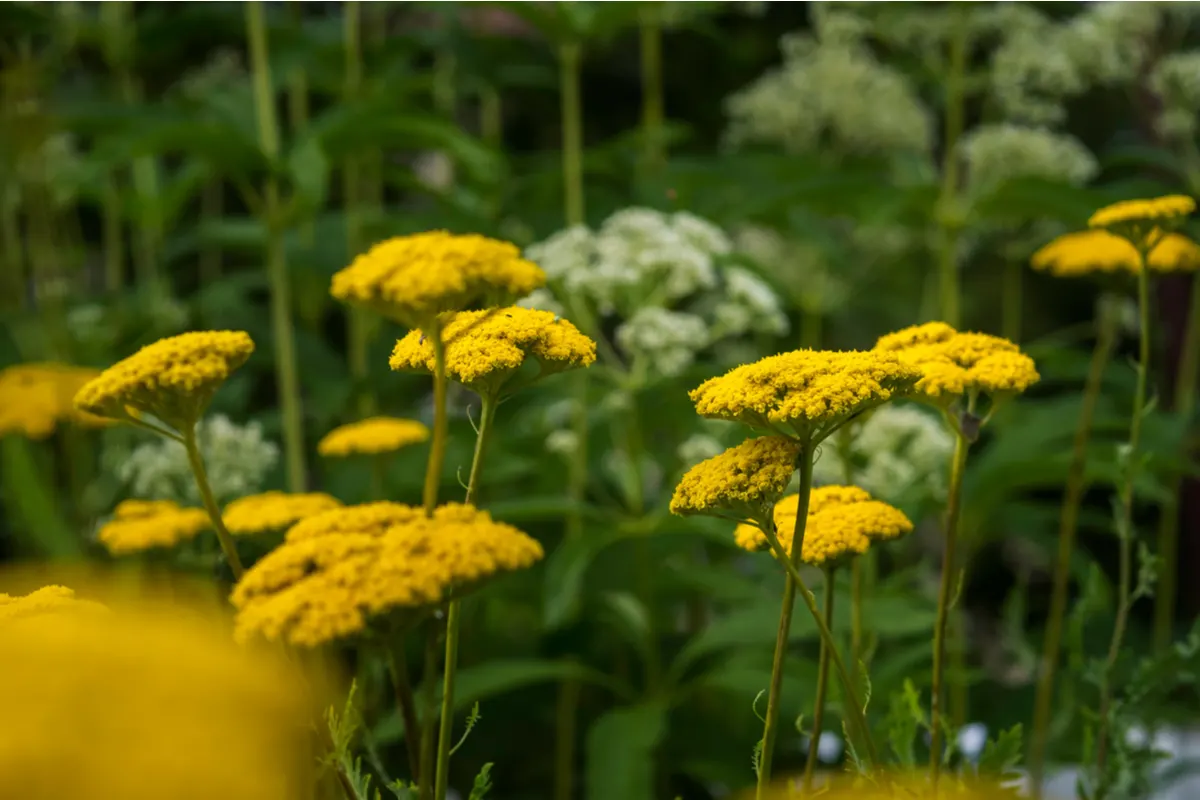
The yarrow is a North American native and is a popular perennial for pollinators. Preferring full sun and thriving in hardiness zones 3 – 9, they grow to about 24 – 48 inches in height. Yarrow produces tiny, tightly-packed flower heads that rise above their clusters of ferny foliage.
This perennial prefers well-drained, loamy soil. When planting yarrow, it’s good to place them 1 – 2 feet apart as they are quick growers. Adding a thin layer of compost around each plant for food in spring would be beneficial.
Divide your yarrow every three to five years to sustain its vigorous growth. Cutting off the dead or faded flowers in mid-summer will often encourage them to put out another bought of flowers.
8. Yellow Daylily (Hemerocallis lilioasphodelus)
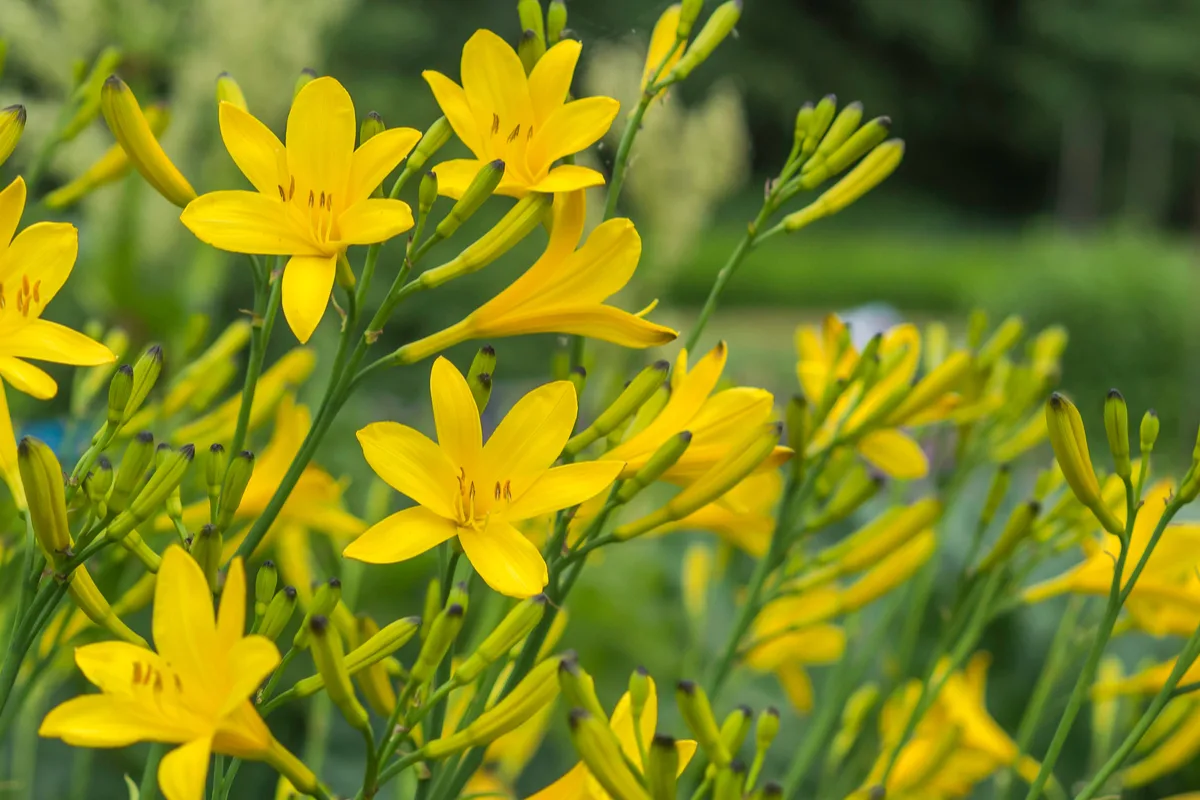
The yellow daylily is an herbaceous perennial that produces beautiful bright yellow flowers of medium size. Preferring full sun and thriving in hardiness zones 3 – 9, this perennial grows to about 20 inches in height.
The daylily has long strap-like green leaves and gets its name because its flowers only last one day. Don’t be put off, as each plant will produce so many flowers/buds you won’t even notice.
The daylily thrives in a more organic loam and prefers well-drained soil. Perfect for growing in containers, rock gardens, or borders, you can plant these perennials in mass groups. Removing the old or dulling flowers will keep your plant looking tidy and will promote continued blooming.
9. Yellow Evening Primrose (Oenothera biennis)
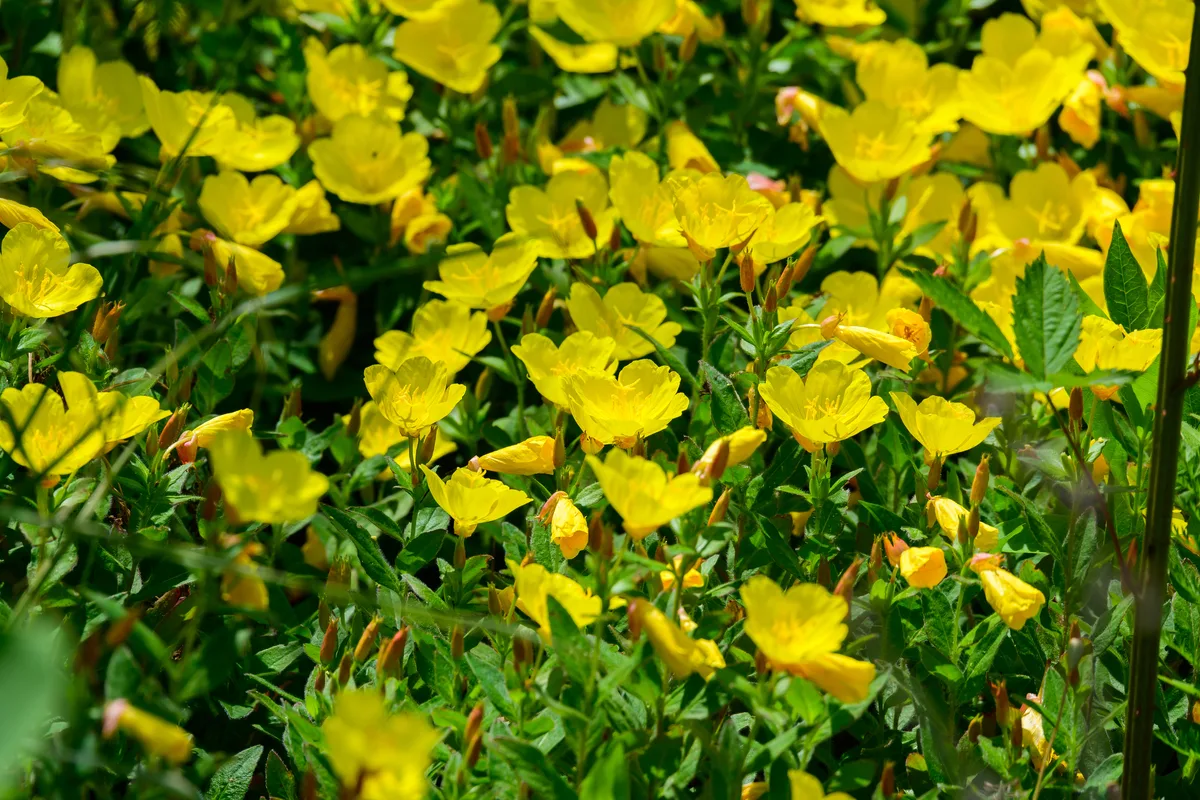
This delicately beautiful perennial is a native to North America. It is also nocturnal, which means that it will open its flowers in the evening and keep them closed during the day.
Thriving in hardiness zones 4 – 9 and growing 36 – 60 inches tall, this perennial prefers full sun to partial shade. Its soil must be well-drained and moist. Adding mulch in a thick layer on top of the soil can help to keep the roots cool during the hot summer months.
Make sure to plant your evening primrose in the cooler months so that the roots and foliage have time to establish themselves before the heat settles; this will ensure that they flower well in summer. The evening primroses’ flowers are edible, both cooked and raw.
10. ‘Yellow Starlet’ Chrysanthemum (Chrysanthemum)
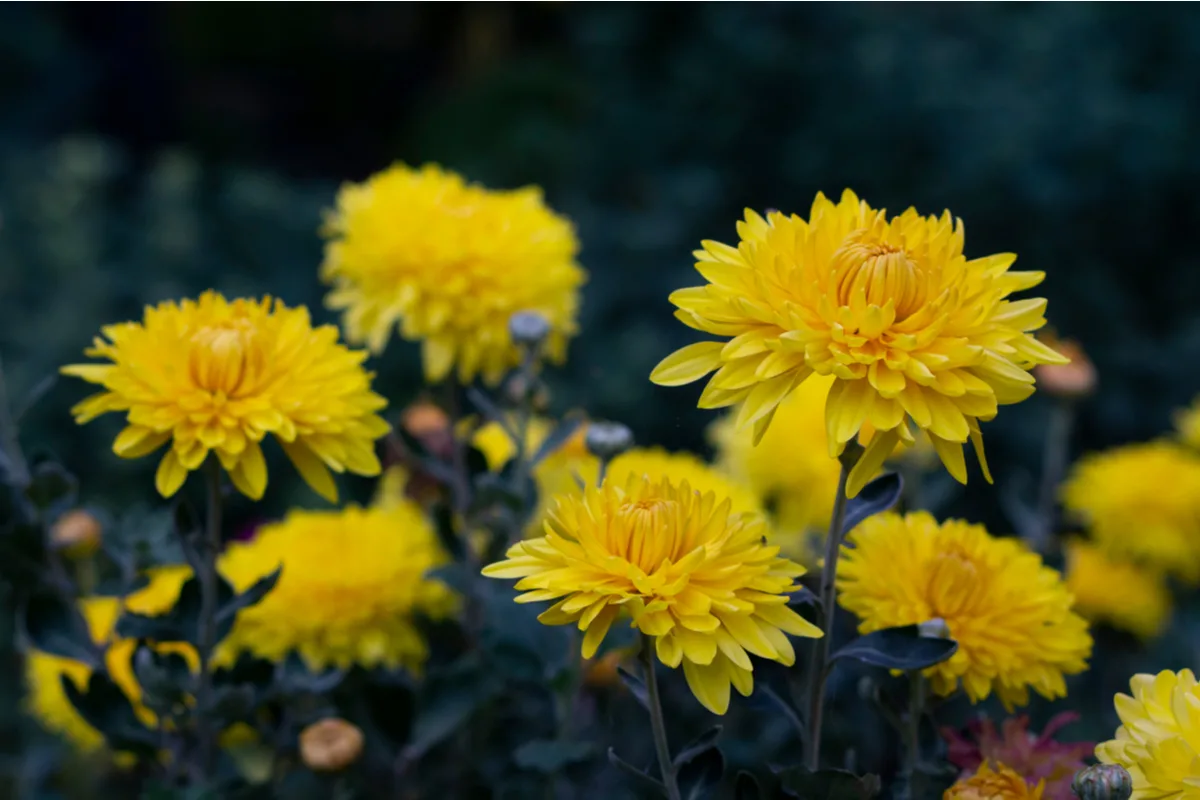
The best grown yellow perennial chrysanthemum is the ‘yellow starlet’ producing spoon-shaped petals on their flowers. Preferring hardiness zones of 5 – 9, this Mum is one of the taller varieties growing up to 24 inches tall.
Yellow starlets like well-drained, fertile soil rich in organic matter and prefer full sunlight during the growing months. Pinching out around 1 inch from the branch tips will encourage a sturdier plant and better bushier branching; you can do this during the growing season about 2 – 3 times.
In the autumn months, you can cut the plant back to ground level to help with the regrowth of the following year. Prime positions for this perennial would be in flower beds or borders, containers, or an informal garden setting.
11. Sweet Goldenrod (Solidago odora)
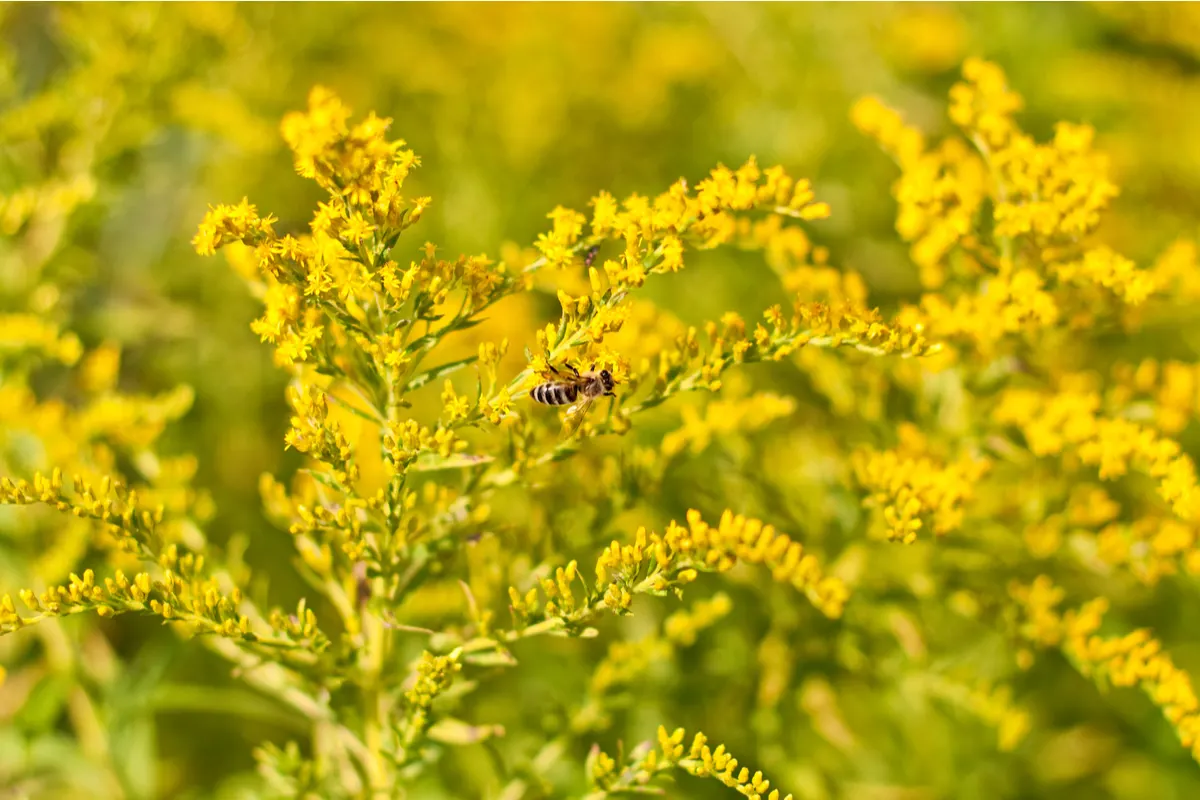
This fragrant goldenrod can often be identified by its anise-scented leaves. It is an Eastern American native, and due to its clump-forming growth patterns, it is one of the better-grown goldenrods for gardens. The goldenrod produces clusters of plume-like yellow, daisy-like flowers on one side of the upper plant.
Its preferred hardiness zones are 4 – 9, and it grows 24 – 48 inches tall. This perennial likes to be grown in full sun to partial shade in well-drained medium to dry soil.
This plant is often used in herbal medicines. You can plant this perennial anywhere in your garden, border, or even in your herb garden. Avoid allowing the plant to self-seed by cutting off old flower heads.
12. Yellow Shasta Daisy (Leucanthemum x superbum ‘Luna’)
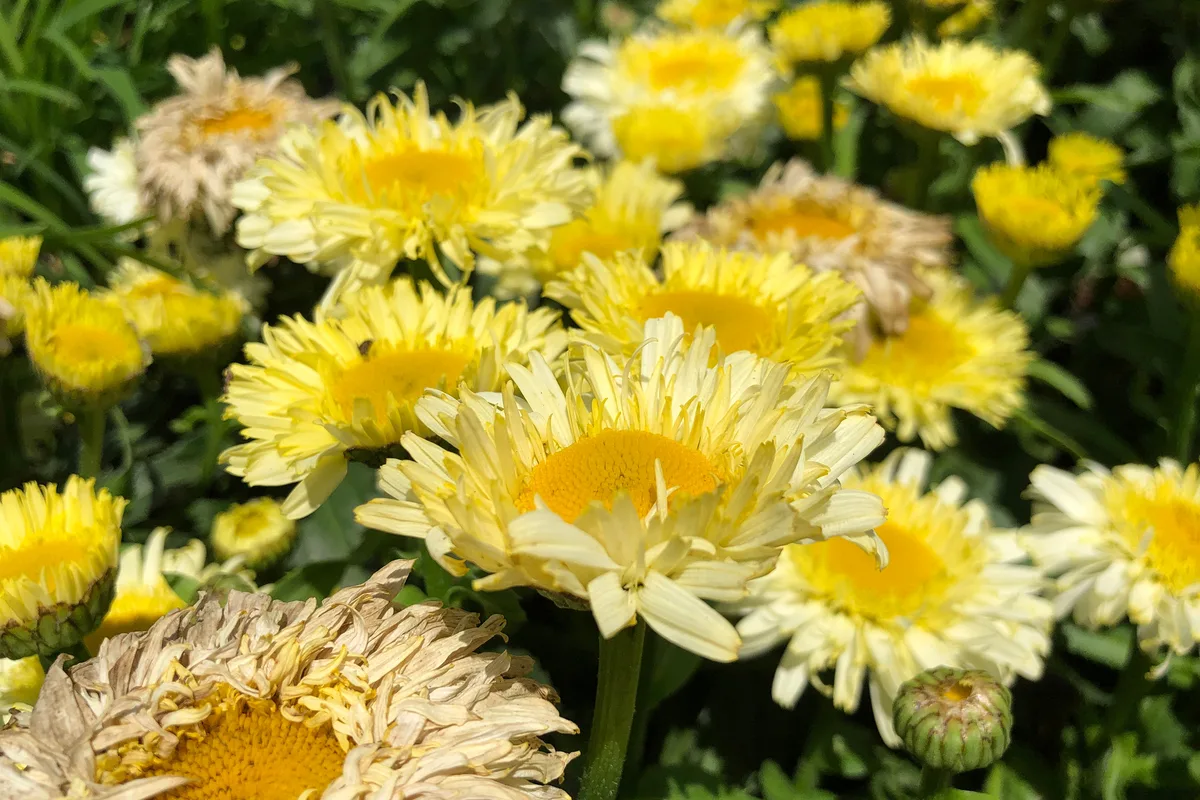
These perennials are part of the chrysanthemum family and produce flowers that look like double pom-poms. Their blooms start yellow, turning to two tones yellow and then turning white, leaving you with a bright yellow center, white middles, and yellow on the edges of the petals.
Shasta daisies prefer hardiness zones of 4 – 9 and grow 18 – 20 inches tall. This Shasta daisy prefers full sun or partial shade, moist, fertile soil with plenty of organic matter on its roots. You can also add a layer of mulch on the topsoil to keep the roots nice and cool during summer.
It would look beautiful in bunches of 5 or more in your garden borders, window boxes, or even as container plants. Trimming the old blooms off will promote repeat blooming.

